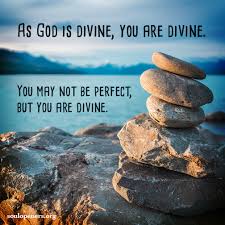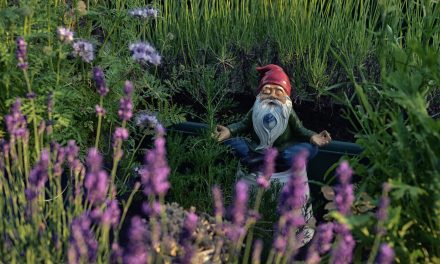I was asked, on a radio program yesterday, what I thought the Pope’s legacy would be, and I said I thought he would be “the great Vatican II pope,” one of the youngest theologians who worked at the Council, who summed up all the great theological work which led up to it. Little did I know that the Pope would choose Vatican II as his theme for his address to a gathering of priests today. (The translation available is a bit informal, so apologies for any rough spots. The Italian is available on the Vatican website.) The address is quite amazing in displaying the importance and power of Vatican II for this man.
First of all, this address should put to rest all the critics (and admirers!) who see Benedict as trying to “roll back the Council.” The whole talk expresses an almost child-like enthusiasm and exuberance.
So, we went to the Council not only with joy, but with enthusiasm. The expectation was incredible. We hoped that everything would be renewed, that a new Pentecost really would come, a new era of the Church, because the Church was not robust enough at that time: the Sunday practice was still good, even vocations to the priesthood and religious life were already somewhat fewer, but still sufficient. But nevertheless, there was the feeling that the Church was going on, but getting smaller, that somehow it seemed like a reality of the past and not the bearer of the future. And now, we hoped that this relationship would be renewed, changed, that the Church would once again source of strength for today and tomorrow. [The Pope then recalled how they saw] “that the relationship between the Church and the modern period was one of some ‘contrasts’ from the outset, starting with the error in the Galileo case, “and the idea was to correct this wrong start “and to find a new relationship between the Church and the best forces in the world, “to open up the future of humanity, to open up to real progress.”
He even bubbles over with excitement about how the Council Fathers came and refused to act by simply rubber-stamping documents presented to them by the Curia:
I remember the Roman Synod was considered as a negative model – where – it is said – they read prepared texts, and the members of the Synod simply approved them, and that was how the Synod was held. The bishops agreed not to do so because they themselves were the subject of the Council. So even Cardinal Frings, who was famous for his absolute, almost meticulous, fidelity to the Holy Father said that the Pope has summoned the bishops in an ecumenical council as a subject to renew the Church. … The first time this attitude became clear, was immediately on the first day. On the first day, the Commissions were to be elected and the lists and nominations were impartially prepared. And these lists were to be voted on. But soon the Fathers said, “No, are not simply going to vote on already made lists. We are the subject.” They had to move the elections because the Fathers themselves wanted to get to know each other a little, they wanted to make their own lists. So it was done. It was a revolutionary act but an act of conscience, of responsibility on the part of the Council Fathers.
In the substance of the talk, Benedict makes clearer what exactly he sees as the true “advances” of the Council. He speaks about liturgical reform as:
“the rediscovery of the richness and depth of the liturgy,” which hitherto was almost locked within the priest’s Roman Missal, while the people prayed with their prayer books … But they were almost two parallel liturgies: the priest with the altar servers, who celebrated the Mass according to the Missal and the lay people who prayed the Mass with their prayer books”. ” Now “The beauty, the depth, the Missal’s wealth of human and spiritual history ” was rediscovered as well as the need more than one representative of the people, a small altar boy, to respond “Et cum spiritu your” etc. , to allow for “a real dialogue between priest and people,” so that the liturgy of the altar and the liturgy of the people really were “one single liturgy, one active participation”
He then goes on to emphasize the importance of ecclesiology:
It was a discovery that created so much joy in this time and in this context the formula arose “We are the Church, the Church is not a structure, something … we Christians, together, we are all the living body of the Church” . And of course this is true in the sense that we, the true ‘we’ of believers, along with the ‘I’ of Christ, the Church. Eachone of us, not we, a group that claims to be the Church. No: this “we are Church” requires my inclusion in the great “we” of believers of all times and places.
He notes (as he has before) that an ecclesiology of “communion” should be the conclusion of this, one that emphasizes the continuity of the Testaments, the centrality of the Eucharist, and the importance of all the roles in the Church working together.
Finally, he turns to “the French concern” about the Church in the modern world, which he notes was less central for the Germans, but then subsequently animated Council Fathers from all over the world. In this regard, he sees Gaudium et Spes, Nostra Aetate, and Dignitatis Humanae as “a very important trilogy” which “we are still working to understand.” In relation to the development of Nostra Aetate to include not only Judaism, but all the world religions, he strikes a particularly inclusive note:
It is not possible for a believer to think that religions are all variations on a theme of “no”. There is a reality of the living God who has spoken, and is a God, a God incarnate, therefore the Word of God is really the Word of God. But there is religious experience, with a certain human light of creation and therefore it is necessary and possible to enter into dialogue and thus open up to each other and open all peoples up to the peace of God, of all his children, and his entire family.
In all of this, Benedict displays a rich, nuanced exemplification of “both continuity and discontinuity.” And indeed, only by reading the whole thing can one grasp how important it is. One might wonder, but where is that “conservative” Benedict? In his conclusion, he offers a new hermeneutic: the true Council versus “the virtual Council of the media.” The Council Fathers functioned with a hermeneutic of faith, but the Council as reported by the media used “a hermeneutic of politics.” The latter hermeneutic proved more accessible and more powerful. But not more enduring.
the virtual Council was stronger than the real Council. But the real strength of the Council was present and slowly it has emerged and is becoming the real power which is also true reform, true renewal of the Church. It seems to me that 50 years after the Council, we see how this Virtual Council is breaking down, getting lost and the true Council is emerging with all its spiritual strength. And it is our task, in this Year of Faith, starting from this Year of Faith, to work so that the true Council with the power of the Holy Spirit is realized and Church is really renewed.
There can surely be debate about the extent to which this true Council/virtual Council hermeneutic is a bit oversimplified. Nevertheless, what is clearly expressed even here is the deep need for “true reform, true renewal.” In a 1975 article, the Pope looked back on the Council and said “the real reception of the Council has not yet even begun,” for “neither embrace nor ghetto can solve for Christians the problem of the modern world.” (In the same essay, he notes that “the theology of Latin America has made that all too clear to us, and has demonstrated thereby the rightness of its cry for liberation.”) In 2013, so many years later, he is still pressing forward with that hope.




